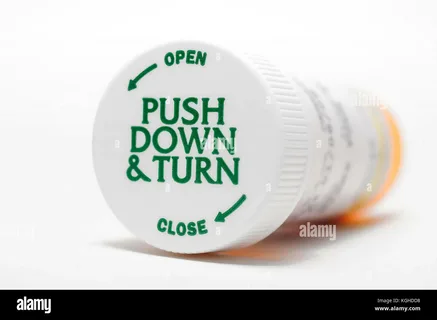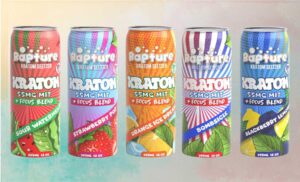
In today’s safety-conscious world, especially for households with young children, terms like child-resistant and child-proof are commonly seen on product packaging—from medicine bottles and cleaning agents to lighters and even certain toys. At first glance, these terms might seem interchangeable, but they’re not. Understanding the difference is not just a matter of semantics—it can directly impact your child’s safety, your legal responsibilities, and your purchasing decisions.
This article will help you understand what sets child-resistant apart from child-proof, why this distinction matters, how manufacturers are regulated, and what you as a consumer can do to ensure your home is truly safe for children.
We’ll also touch on an important yet often overlooked aspect of consumer culture—how parents and families in Australia are turning to thoughtful, safety-minded alternatives in everything from household storage to gifting practices, including the rise of charity gifts in Australia that support children’s health and wellbeing.
What Does “Child-Proof” Really Mean?
The term child-proof suggests something that a child cannot get into or operate under any circumstances. In a literal sense, “proof” implies a complete prevention of access—like waterproof means no water can get in, and soundproof means no sound can get through. However, this is a dangerously misleading term when applied to child safety.
No product is truly child-proof.
Children are naturally curious and remarkably clever. They are often able to defeat seemingly secure packaging or mechanisms through persistence, strength, or even by accident. Labeling something as child-proof can give parents a false sense of security, leading to risky storage habits.
Due to this misleading nature, “child-proof” is no longer commonly used in official product labeling in countries like the United States, Canada, and Australia. Regulatory bodies and manufacturers now use the term child-resistant, which is more accurate and realistic.
What Is “Child-Resistant”?
Child-resistant packaging is specifically designed to be difficult—but not impossible—for a child under the age of five to open within a reasonable amount of time. This gives adults enough time to intervene if a child gains access to a dangerous product, but does not assume impenetrability.
These packages usually:
-
Require strength or coordination beyond a young child’s ability (e.g., push-and-turn lids),
-
Have locking mechanisms that need adult-sized dexterity,
-
Meet specific safety regulations, such as those from the Australian Competition & Consumer Commission (ACCC) or Poison Prevention Packaging Act (PPPA) in the U.S.
Common examples of child-resistant packaging include:
-
Medicine bottles with safety caps
-
Lighters with extra ignition steps
-
Containers for cannabis or nicotine products
-
Laundry pods in resealable, child-resistant bags
Why the Difference Matters for Parents and Caregivers
Understanding this distinction isn’t just academic. Here’s why it matters:
1. False Sense of Security Can Lead to Unsafe Storage
If you believe a container is child-proof, you might leave it on a counter or in an unlocked drawer. But if it’s only child-resistant—or worse, not certified at all—this opens the door for accidents.
2. Injury and Poison Prevention
In Australia, thousands of children are hospitalized each year due to accidental poisonings, often from medications or cleaning supplies that weren’t stored securely. Recognizing that nothing is truly child-proof encourages adults to use multiple layers of protection.
3. Legal and Insurance Implications
Product manufacturers have to adhere to specific labeling standards. Mislabeling a product as “child-proof” could lead to lawsuits. For consumers, failing to use appropriate child-resistant packaging can affect insurance claims in case of an incident.
Standards and Certifications: How Child-Resistant Is Measured
Child-resistant products must undergo rigorous testing by approved agencies. The most widely accepted method is a human performance test involving children and adults.
For example, to meet the ISO 8317 or AS/NZS 1928 standards:
-
A group of children under five are given access to the product.
-
At least 85% should not be able to open it within 5 minutes.
-
Then, after a demonstration, at least 80% still must fail to open it in another 5 minutes.
Adult users are also tested to ensure the container can still be opened and closed correctly without tools or excessive force.
This balance—secure enough to keep kids out but usable for adults—is the hallmark of child-resistant, not child-proof, design.
The Broader Context: Safety-Conscious Living and Ethical Gifting
In many modern Australian households, safety and social consciousness go hand in hand. Whether it’s choosing eco-friendly toys, organic foods, or child-safe furniture, parents are increasingly choosing brands and products that align with both values.
This is where the growing trend of charity gifts in Australia fits in.
What Are Charity Gifts?
Instead of giving a physical item, a charity gift is a donation made in someone’s name that supports a meaningful cause. These are often popular for:
-
Birthdays
-
Baby showers
-
Holidays
-
Corporate gifts
For example, you might give a gift that provides:
-
Nutritional meals for underprivileged kids,
-
Safe sleep environments for infants in crisis,
-
First aid or mental health support in remote Aboriginal communities.
This gifting style not only eliminates clutter but also promotes health and safety for children and families in need—further reinforcing the value of conscious living.
Connecting the Dots: Safety at Home and Safety Beyond
Choosing child-resistant over child-proof is about being realistic, informed, and proactive. The same mindset applies when you support causes that ensure other children across Australia have the resources and safe environments they need.
Opting for charity gifts in Australia is more than a donation—it’s an extension of your home’s values. Just like child-resistant packaging keeps your kids safe, charity gifts can help provide shelter, education, or healthcare to children who are vulnerable.
Practical Safety Tips for Parents and Caregivers
Understanding product labeling is just the beginning. Here’s how to put that knowledge into action:
-
Always Choose Certified Child-Resistant Containers
-
Especially for medications, cleaning agents, cannabis, and nicotine products.
-
Look for ISO, ASTM, or ACCC certifications.
-
-
Don’t Rely Solely on the Package
-
Keep all hazardous products locked away, out of reach, even if they’re in child-resistant containers.
-
-
Educate Older Children
-
Teach children about the dangers of unknown substances. Never refer to medicine as “candy,” even to encourage them to take it.
-
-
Support Organizations that Protect Children
-
Whether through donations or charity gifts in Australia, supporting nonprofits that advocate for child safety multiplies your impact beyond your home.
-
Conclusion: Safety Is a Shared Responsibility
Understanding the difference between child-resistant and child-proof is critical in creating a safe home for children. While no product is completely tamper-proof, modern child-resistant packaging is designed to buy adults time and deter young children from accessing dangerous items. It’s a smart, informed, and responsible step every parent should take.
But safety doesn’t stop at your doorstep. Choosing charity gifts in Australia is another powerful way to extend care, protection, and opportunity to children and families across the country. Together, these choices form the backbone of a socially conscious, safe, and compassionate household—and community.
Because real safety isn’t about sealing things away—it’s about creating an environment where every child can thrive.





